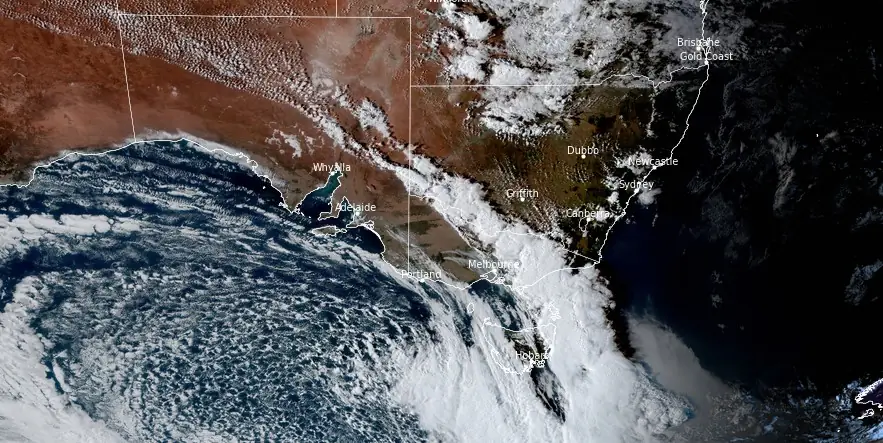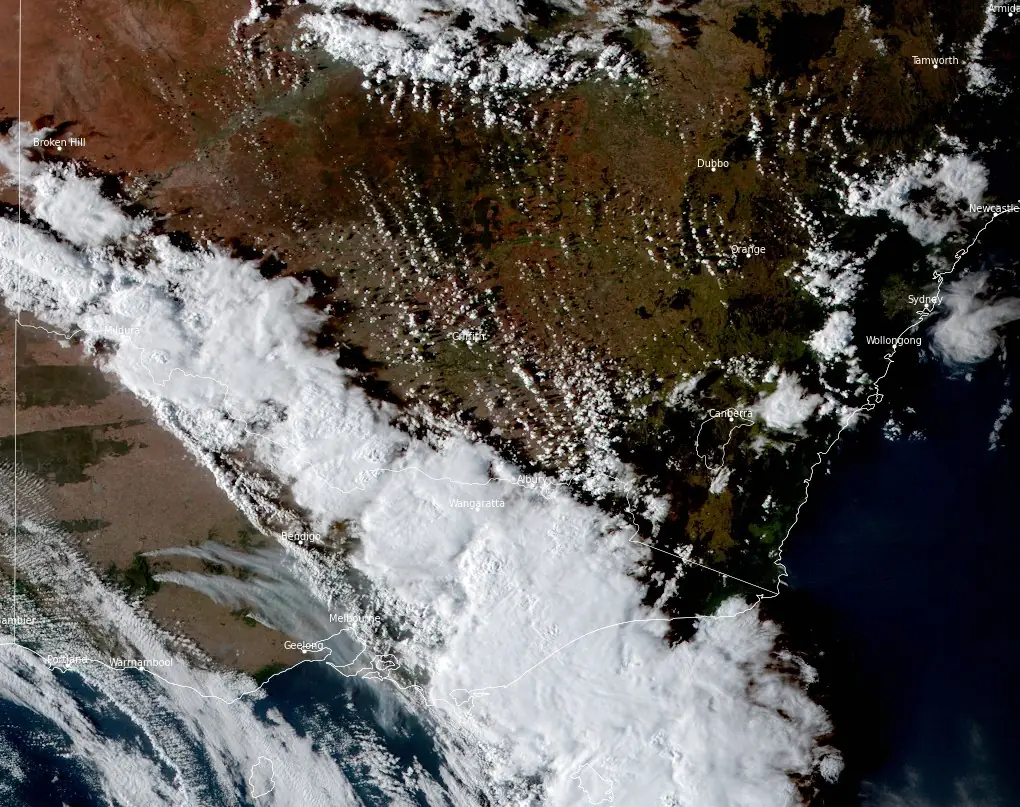Massive power outages hit Victoria during violent thunderstorms, Australia

Violent thunderstorms struck Australia’s east coast on February 13, 2024, leading to significant damage and disruptions. The storms caused the shutdown of AGL’s Loy Yang A power station in Victoria, leaving approximately 590 000 homes and businesses without electricity. The Australian Energy Market Operator (AEMO) was forced to cap electricity prices at A$16,600 per megawatt hour, a significant increase from the usual A$200. Efforts to restore power are ongoing, with some customers already reconnected.
Violent thunderstorms with winds in excess of 100 km/h (62 mph) hit Victoria’s east coast on Tuesday, February 13, 2024, causing widespread damage, including downed trees and power lines.
Between 12:00 and 18:00 LT, the Victoria State Emergency Service received well over 1 500 calls for assistance, and the number continued rising with ongoing thunderstorm activity.
The most significant impact was the shutdown of AGL’s Loy Yang A power station, a critical infrastructure responsible for about a third of the state’s electricity supply. The station’s closure was a direct result of the collapse of several towers along a key section of Victoria’s transmission network during the storm, characterized by strong winds and heavy rainfall.
In the aftermath of the plant’s shutdown, electricity prices in Victoria soared to their maximum limit of A$16,600 (approximately USD) per megawatt hour, a stark increase from the average price of around A$200.
Responding to the crisis, the Australian Energy Market Operator (AEMO) implemented measures to cut electricity usage across the network, a decision aimed at managing the reduced power supply and preventing further system overload.
State energy minister Lily D’Ambrosio announced that efforts to mitigate the situation had led to the restoration of one of Loy Yang’s four units, allowing for the end of mandatory power cuts. However, despite this progress, approximately 500 000 customers remained without power as of the evening of February 13, with an earlier restoration for 90 000 customers.
The widespread power outages have affected a broad swath of Victoria, from Melbourne’s western suburbs to regional towns like Bendigo, Ballarat, and Shepparton. The extent of the damage and the challenging weather conditions suggest that restoring power to all affected areas could take days, according to Emma Tyner, a spokesperson for Citipower and Powercor.
The event has renewed the calls for urgent investment in the power infrastructure, with AEMO saying there is an urgent need for a reliable power supply amidst the retirement of aging coal-fired plants.

Over the past weekend, Victoria started experiencing its first heatwave of the summer, marking a period of extreme bushfire risk across the state, particularly in its western regions. This prompted evacuations amidst fears of ‘catastrophic’ bushfires, a threat level not issued in the area for 14 years. Authorities warned the conditions are the worst they’ve seen since the 2019 Black Summer bushfires.
James Todd from Victoria’s State Control Centre emphasized the critical nature of the situation, urging residents in the Wimmera region to heed evacuation warnings. He explained the potential for fast-moving grassfires under the forecasted strong northerly winds and the subsequent southwesterly change.
While acknowledging the strong language [catastrophic] used to describe the risk, Todd stressed the importance of conveying the severity to ensure public safety. He highlighted the unpredictable and uncontrollable nature of fires under such conditions, advising residents of towns such as Rainbow, Warracknabeal, Minyip, Rupanyup, and Murtoa to evacuate and avoid attempting to defend their properties under severe weather conditions.
On Monday, February 12, temperatures exceeded 30 °C (86 °F) in five Australian state and territory capitals, including Adelaide, Perth, Melbourne, Canberra, and Darwin. Port Augusta, South Australia, recorded the day’s highest temperature at 42.6 °C (108.68 °F), with Adelaide reaching 38 °C (100.4 °F) around 14:30 ACDT. A forecasted cool change was expected to lower temperatures to 27 °C (80.6 °F) early Tuesday.
In Victoria, the northwest towns of Hopetoun and Walpeup saw temperatures reach 41 °C (105.8 °F), and Mildura 40 °C (104 °F). Melbourne’s temperature climbed to 35 °C (95 °F) on Monday, with an expectation of hitting 36 °C (96.8 °F) on Tuesday following a 33 °C (91.4 °F) day on Sunday.
References:
1 Severe storms cut power and close roads in NSW and Victoria – 7news – February 13, 2024
2 Half a million Victorian customers without power as Loy Yang A shuts down and storms damage infrastructure – ABC – February 13, 2024
3 Victorian bushfires threaten Grampians communities as storms lash Melbourne – ABC – February 12, 2024
4 Vic and SA feeling the heat – weatherzone – February 12, 2024
5 Hundreds of thousands lose power in Australia after weather downs power lines – The Economic Times – February 13, 2024
6 Summer heat scorches much of Australia as forecast cool change in Victoria prompts fire risk warning – The Guardian – February 12, 2024
Featured image credit: JMA/Himawari-9, RAMMB/CIRA, The Watchers. Acquired at 07:40 UTC on February 13, 2024

Commenting rules and guidelines
We value the thoughts and opinions of our readers and welcome healthy discussions on our website. In order to maintain a respectful and positive community, we ask that all commenters follow these rules.